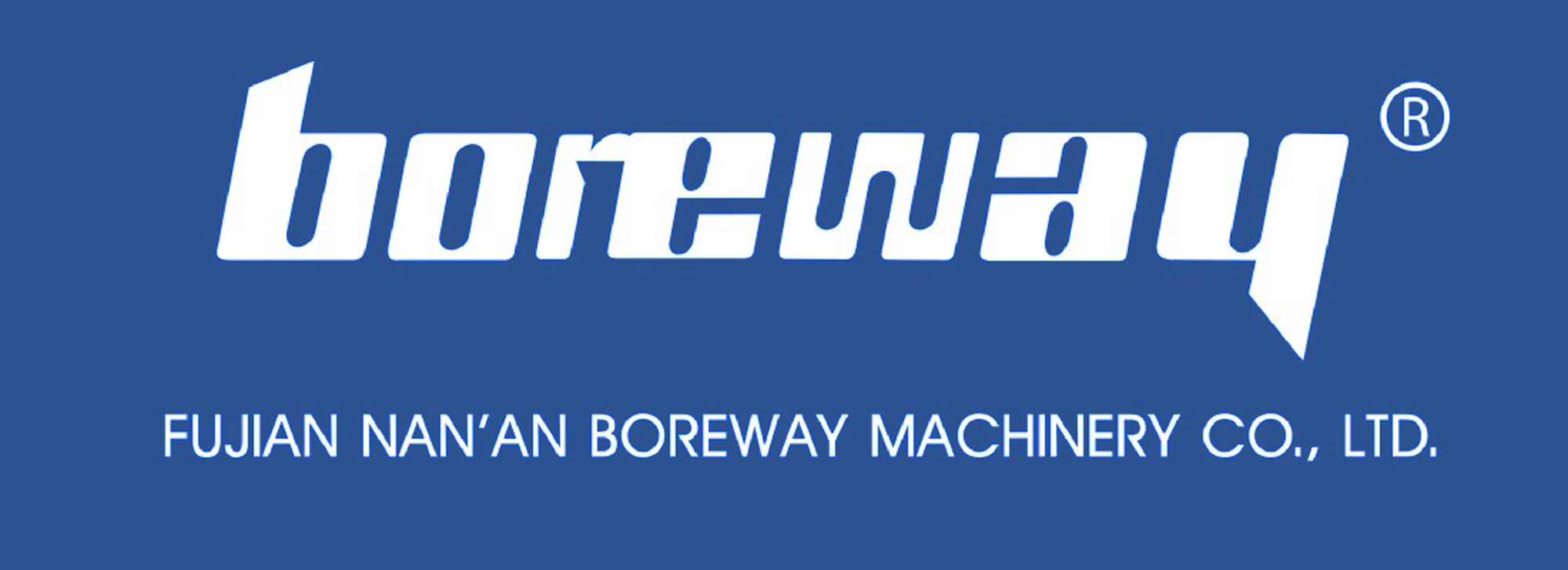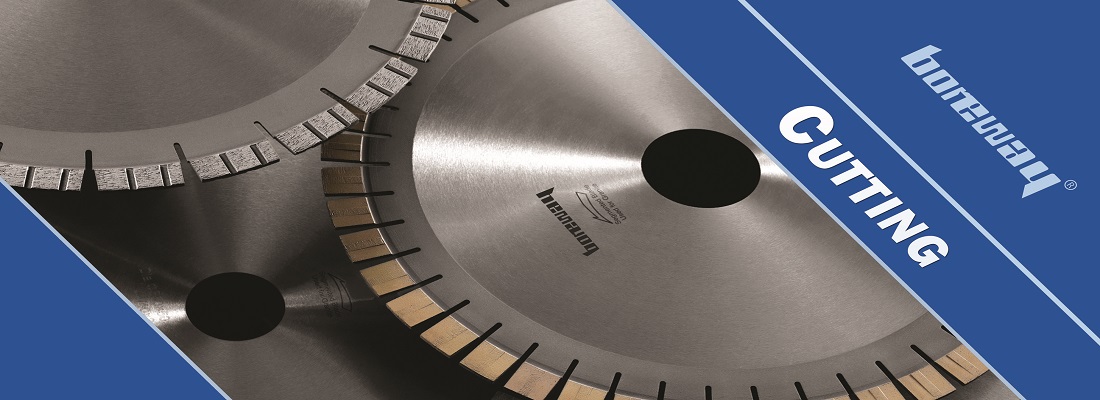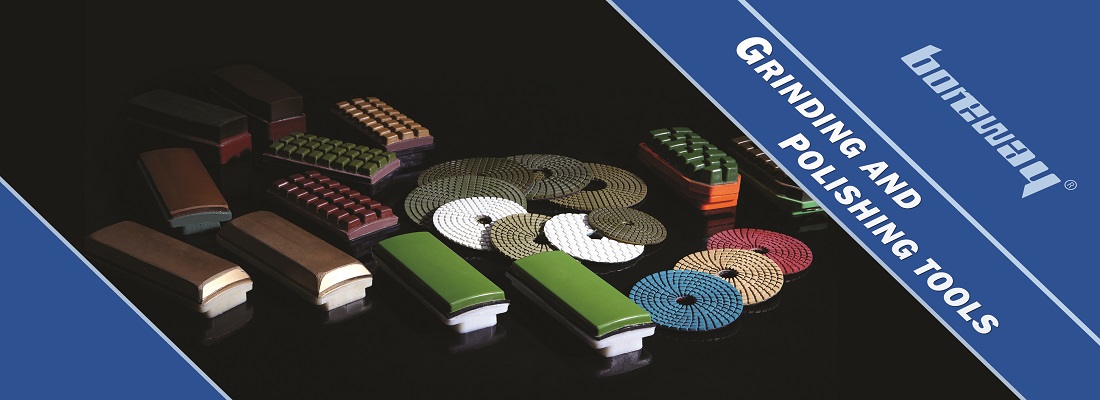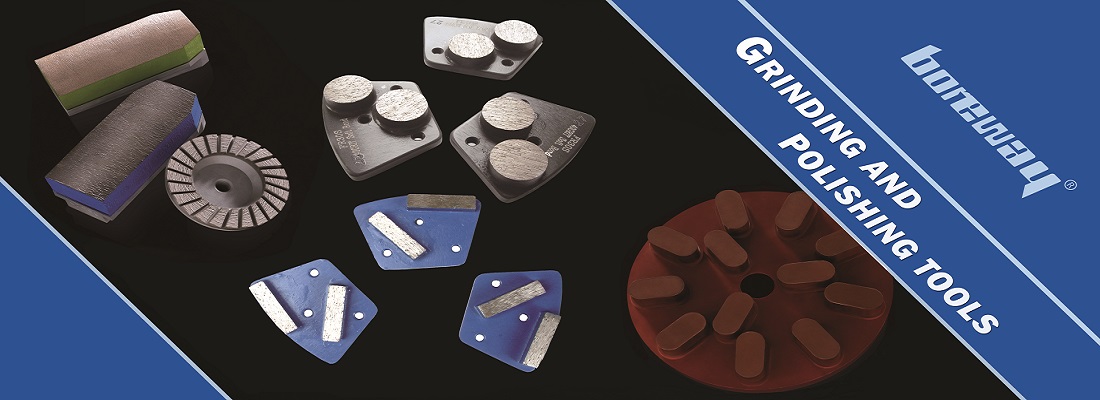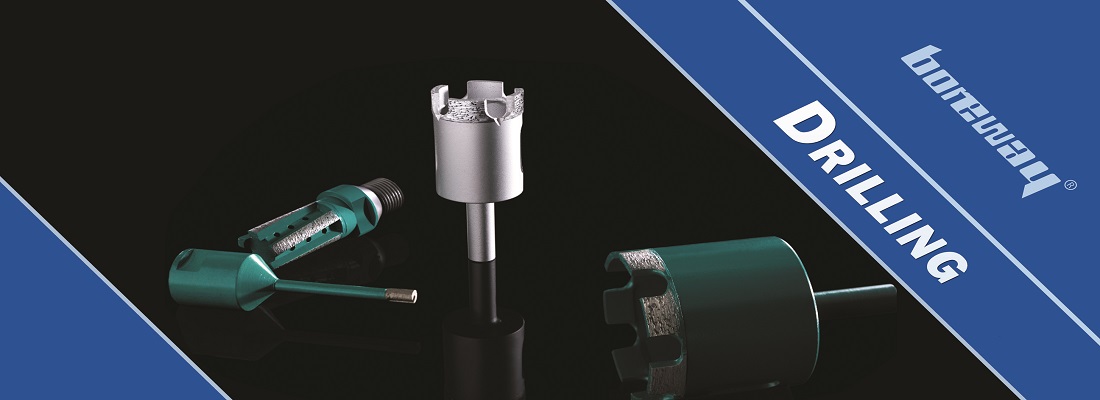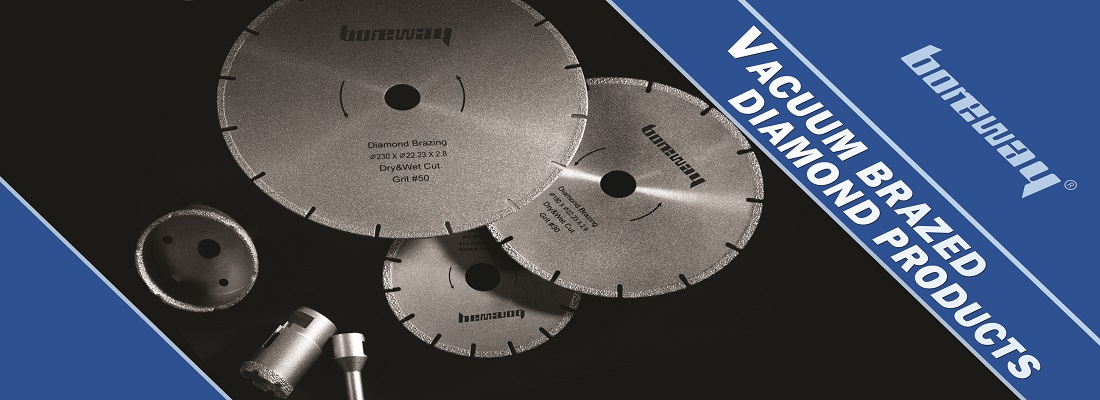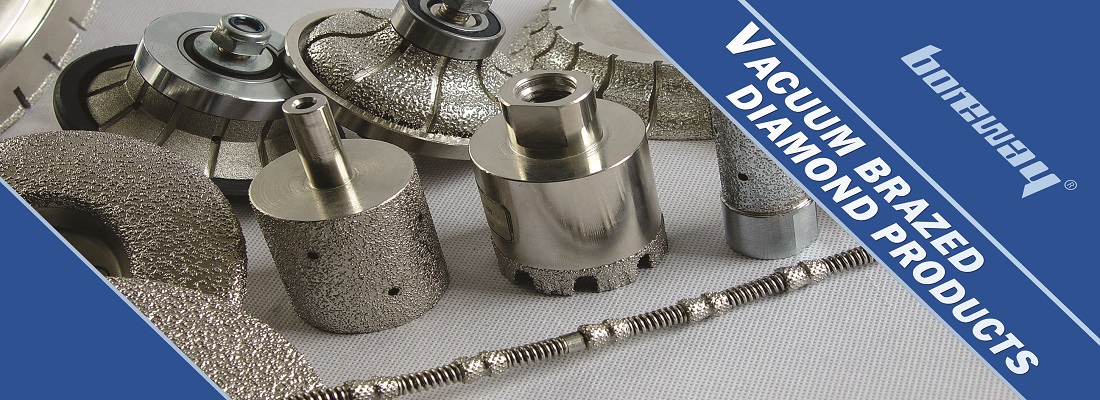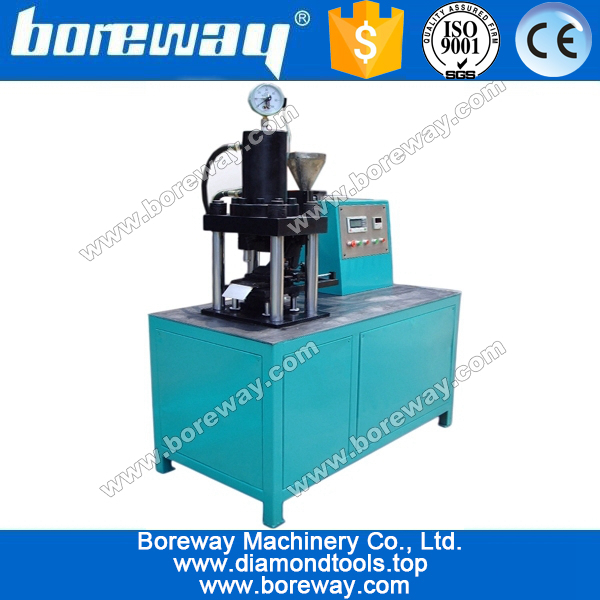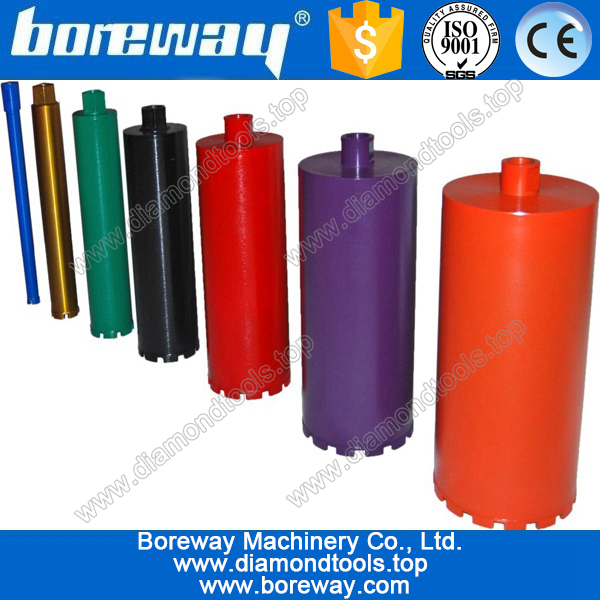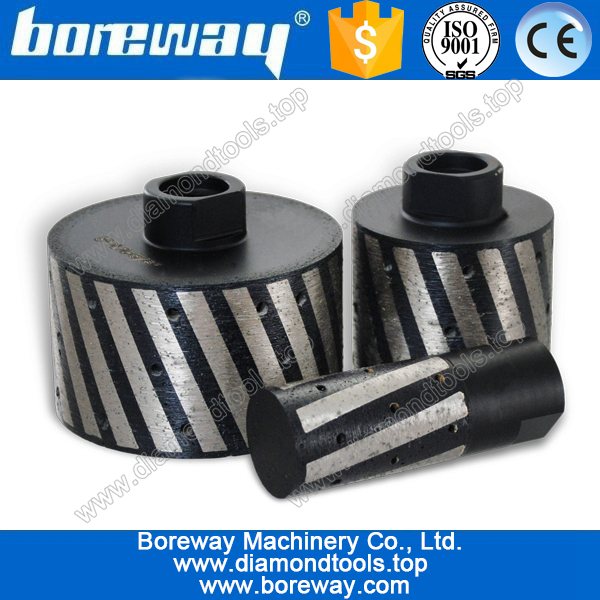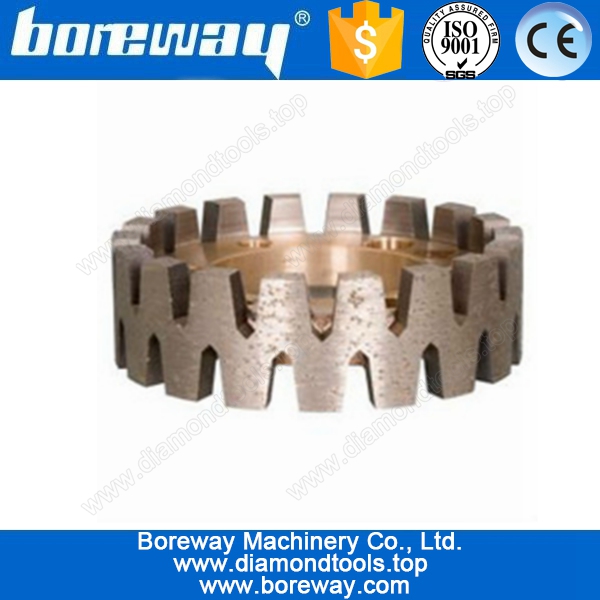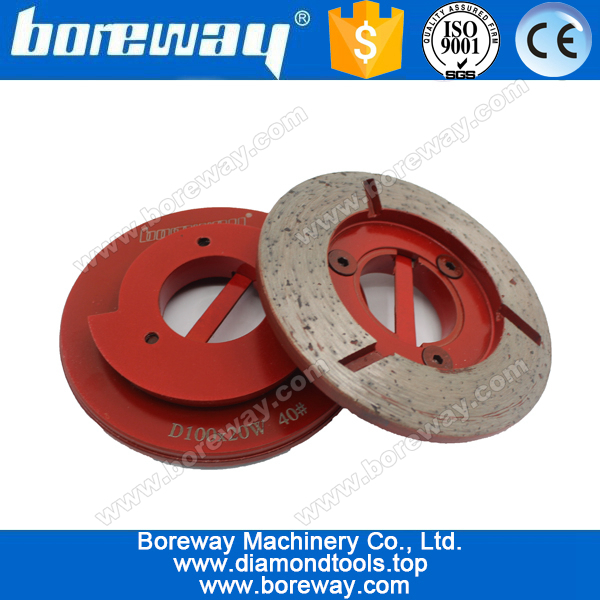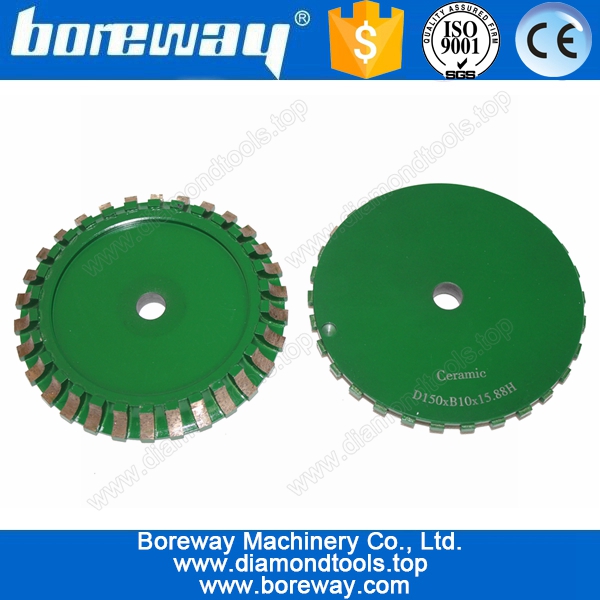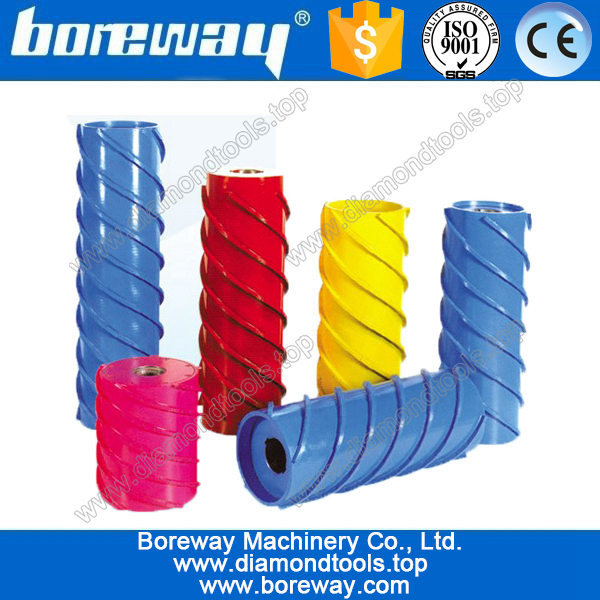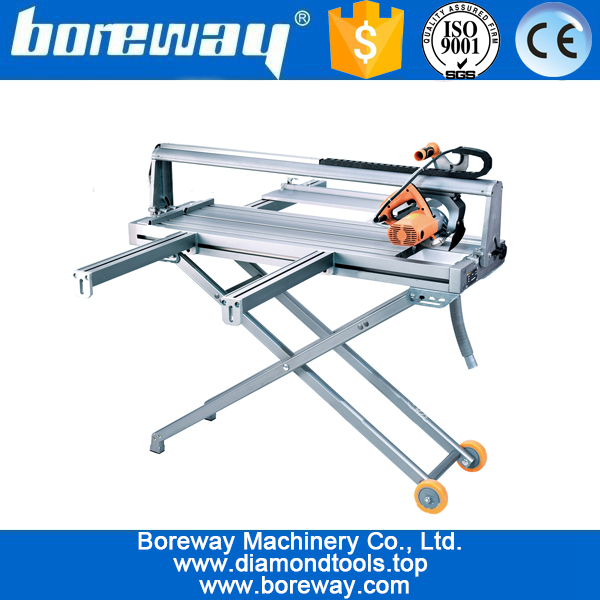Diamond saw technology - diamond blade manufacturing method
Chois Dong
boreway.com
2015-09-07 16:22:57
With the rapid development of the automotive, aviation and aerospace technology, material properties and processing technology requirements are increasing. New materials such as carbon fiber reinforced plastics, particulate reinforced metal matrix composites (PRMMC) and ceramic materials are widely used. These materials have high strength, wear resistance, low coefficient of thermal expansion characteristics, which determines when they are machining tool life is very short. Development of new wear-resistant and stable superhard cutting tool is many topics universities, research institutes and enterprises research. Diamond set mechanical, optical, thermal, acoustic, optical, and many other outstanding performance in one, with a high hardness, low friction coefficient, high thermal conductivity, thermal expansion coefficient and chemically inert low, it is an ideal material for the manufacture of the tool. In this paper, the recent development of the diamond tool manufacturing methods provide an overview.
Cited range of applications
Processing (1) difficult machining non-ferrous materials
When the processing of copper, zinc, aluminum and other nonferrous metals and alloys, the material is easy to adhere to the tool, processing difficulties. Using a diamond low coefficient of friction, and non-ferrous metal affinity characteristics of small, diamond tools and cutting tools can effectively prevent the occurrence of metal bonding. In addition, since diamond elastic modulus, when deformation of the cutting edge portion of the cutting of non-ferrous metal extrusion small, can make the cutting process is completed at small deformation, which can improve the surface quality.
(2) difficult to process non-metallic materials
Machining high hardness particle containing a large amount of hard non-metallic materials, such as glass fiber reinforced plastic, fill silicon material, hard carbon fiber / epoxy composite material when hard particle materials enables tool wear serious, hard carbide cutting tools processing and diamond tools, high hardness, wear resistance, and therefore high processing efficiency.
(3) ultra-precision machining
With the advent of modern integrated technology, precision machining to develop in the direction of the tool performance we put forward a very high demand. Because diamond friction coefficient, low thermal expansion coefficient, thermal conductivity, can cut very thin chips, chip easily flows out, with affinity for other substances is small, easy BUE, heat a small, high thermal conductivity, heat can be avoided Effect of the blade and the workpiece, and therefore not easy to passivation edge, cutting small deformation, high surface quality can be obtained.
The method of manufacturing the diamond tool
Currently the main diamond processing method has the following four: film coated tools, welding thick-film diamond cutting tools, diamond cutting tools and single-crystal diamond sintered body tool.
2.1 Thin Film Coated Tools
Film coated tools are rigid and high-temperature characteristics of a good collective material deposited diamond film is formed by chemical vapor deposition (CVD) tool.
Since Si3N4 ceramics, WC-Co system thermal expansion coefficient of diamond and carbide metal W is close, small thermal stress generated when the film, it can be used as the base material of the cutter body. WC-Co-based cemented carbide, a binder phase of Co exists between easy to make diamond film and the substrate is formed of graphite and reduce adhesion strength required to be pretreated prior to deposition in order to eliminate the influence of Co (typically by acid etching to Co) ʱ??
Chemical vapor deposition method is to use a certain method to activate the source gas containing C, at very low gas pressure, so that the carbon atoms deposited in a certain area, the carbon atoms in the condensed, forming a diamond phase deposition process. Currently used for the deposition of diamond by CVD include: microwave, hot filament, DC arc jet method.
Advantages of diamond film is used in a variety of complex tool geometries, such as a blade with a chip, end mills, reamers and drills; can be used to cut a lot of non-metallic materials, cutting force when cutting small, small deformation, smooth, abrasion slow, easy deformation of the workpiece for good workpiece material, finishing tolerances. The main disadvantage is the poor adhesion of diamond film and the substrate, the diamond film does not have a throwaway character.
2.2 diamond thick welding tool
Thick welded diamond cutting tool production process generally include: preparation of large area diamond film; the film was cut into diamond shapes and sizes required tool; welding diamond thick film substrate material and tool; diamond thick film cutting edge grinding and polishing ʱ?? Preparation and cutting (1) diamond films
Commonly used process for the preparation of diamond films is the DC plasma jet CVD method. The diamond is deposited onto WC-Co alloy (mirror-finished surface), and in the cooling process of the substrate, the diamond film off automatically. This method of deposition speed (up to 930μm / h), binding between the lattice more closely, but the growth surface is rough. Diamond film of high hardness, wear resistance, non-conductive determines its cutting method is laser cutting (cutting can be carried out in air, oxygen and argon environment). Laser cut diamond thick film can not only cut to desired shape and size, but also can be cut out after the angle of the tool, with a narrow kerf, high efficiency and other advantages.
(1) Diamond Thick Film Cutters Welding
Having between diamond and general metal and its alloys high interfacial energy, resulting in diamond can not be generally low melting point alloy infiltration, weldability is poor. At present, the addition of a strong carbide-forming elements or by diamond surface metallization process to improve the diamond and the metal between solderability of copper silver alloy solder.
① active brazing method
Generally copper silver alloy solder containing Ti, without flux welding in an inert gas or vacuum. Commonly used solder composition Ag = 68.8wt%, Cu = 26.7wt%, Ti = 4.5wt%, commonly used methods of preparation are arc melting and powder metallurgy. Ti as an active element in the welding process and generate C reflect TiC, can improve wettability and adhesion strength of diamond and solder. The heating temperature is generally 850 ℃, incubated 10 minutes, slow cooling to reduce internal stress.
② welding the rear surface metallization
Metallized diamond surfaces by surface treatment technology of metal plating on the surface of the diamond, so that the surface having the properties of a metal or metalloid. Generally in the surface of the diamond-plated Ti, Ti C reacts with TiC, TiC and Ag-Cu solder alloy has good wetting and bonding strength. Titanium currently used methods are: vacuum physical vapor deposition (PVD, including vacuum evaporation plating, vacuum sputtering, vacuum ion plating, etc.), chemical vapor plating and powder covering sintering. PVD plating method single volume low, diamond plating process temperature below 500 ℃, is a physical attachment between the coating and the diamond, no chemical metallurgy. Ti and diamond CVD method, a chemical reaction to form a strong metallurgical bond, the reaction temperature is high, damage to the diamond.
(2) thick-film diamond tool sharpening
Diamond Thick Film Cutters processing methods are: mechanical grinding, hot metal disk polishing, ion beam, laser beam and plasma etching.
twenty three Diamond sintered body tool
The method will be processed into thick diamond abrasive damage by rolling average particle size of the diamond grains 32 ~ 37μm or direct use of the legal system HPHT diamond grains, the grains of powder piled onto WC-16wt% Co alloy, then Ta foil to isolate and sintered at 5.5GPa, 1500 ℃ for 60 minutes to prepare a diamond sintered body, with the tools of this sintered body has a high abrasion resistance.
2.4 single-crystal diamond tool
Single crystal diamond single crystal diamond cutter is usually fixed in a knife head knife head with a screw or plate is fixed to the turning arbor. Diamond knife fixing method in the head are: mechanical reinforcement method (pressing surface and the bottom surface of the polished diamond, with plate fixation in the knife head); powder metallurgy method (the diamond on the alloy powder by adding pressure in the vacuum sintering, the diamond knife fixed head); bonding and brazing method (using an inorganic binder or other adhesive fixing diamond). Since the thermal expansion coefficient of diamond and matrix differences between diamond easy to loose.
Cited range of applications
Processing (1) difficult machining non-ferrous materials
When the processing of copper, zinc, aluminum and other nonferrous metals and alloys, the material is easy to adhere to the tool, processing difficulties. Using a diamond low coefficient of friction, and non-ferrous metal affinity characteristics of small, diamond tools and cutting tools can effectively prevent the occurrence of metal bonding. In addition, since diamond elastic modulus, when deformation of the cutting edge portion of the cutting of non-ferrous metal extrusion small, can make the cutting process is completed at small deformation, which can improve the surface quality.
(2) difficult to process non-metallic materials
Machining high hardness particle containing a large amount of hard non-metallic materials, such as glass fiber reinforced plastic, fill silicon material, hard carbon fiber / epoxy composite material when hard particle materials enables tool wear serious, hard carbide cutting tools processing and diamond tools, high hardness, wear resistance, and therefore high processing efficiency.
(3) ultra-precision machining
With the advent of modern integrated technology, precision machining to develop in the direction of the tool performance we put forward a very high demand. Because diamond friction coefficient, low thermal expansion coefficient, thermal conductivity, can cut very thin chips, chip easily flows out, with affinity for other substances is small, easy BUE, heat a small, high thermal conductivity, heat can be avoided Effect of the blade and the workpiece, and therefore not easy to passivation edge, cutting small deformation, high surface quality can be obtained.
The method of manufacturing the diamond tool
Currently the main diamond processing method has the following four: film coated tools, welding thick-film diamond cutting tools, diamond cutting tools and single-crystal diamond sintered body tool.
2.1 Thin Film Coated Tools
Film coated tools are rigid and high-temperature characteristics of a good collective material deposited diamond film is formed by chemical vapor deposition (CVD) tool.
Since Si3N4 ceramics, WC-Co system thermal expansion coefficient of diamond and carbide metal W is close, small thermal stress generated when the film, it can be used as the base material of the cutter body. WC-Co-based cemented carbide, a binder phase of Co exists between easy to make diamond film and the substrate is formed of graphite and reduce adhesion strength required to be pretreated prior to deposition in order to eliminate the influence of Co (typically by acid etching to Co) ʱ??
Chemical vapor deposition method is to use a certain method to activate the source gas containing C, at very low gas pressure, so that the carbon atoms deposited in a certain area, the carbon atoms in the condensed, forming a diamond phase deposition process. Currently used for the deposition of diamond by CVD include: microwave, hot filament, DC arc jet method.
Advantages of diamond film is used in a variety of complex tool geometries, such as a blade with a chip, end mills, reamers and drills; can be used to cut a lot of non-metallic materials, cutting force when cutting small, small deformation, smooth, abrasion slow, easy deformation of the workpiece for good workpiece material, finishing tolerances. The main disadvantage is the poor adhesion of diamond film and the substrate, the diamond film does not have a throwaway character.
2.2 diamond thick welding tool
Thick welded diamond cutting tool production process generally include: preparation of large area diamond film; the film was cut into diamond shapes and sizes required tool; welding diamond thick film substrate material and tool; diamond thick film cutting edge grinding and polishing ʱ?? Preparation and cutting (1) diamond films
Commonly used process for the preparation of diamond films is the DC plasma jet CVD method. The diamond is deposited onto WC-Co alloy (mirror-finished surface), and in the cooling process of the substrate, the diamond film off automatically. This method of deposition speed (up to 930μm / h), binding between the lattice more closely, but the growth surface is rough. Diamond film of high hardness, wear resistance, non-conductive determines its cutting method is laser cutting (cutting can be carried out in air, oxygen and argon environment). Laser cut diamond thick film can not only cut to desired shape and size, but also can be cut out after the angle of the tool, with a narrow kerf, high efficiency and other advantages.
(1) Diamond Thick Film Cutters Welding
Having between diamond and general metal and its alloys high interfacial energy, resulting in diamond can not be generally low melting point alloy infiltration, weldability is poor. At present, the addition of a strong carbide-forming elements or by diamond surface metallization process to improve the diamond and the metal between solderability of copper silver alloy solder.
① active brazing method
Generally copper silver alloy solder containing Ti, without flux welding in an inert gas or vacuum. Commonly used solder composition Ag = 68.8wt%, Cu = 26.7wt%, Ti = 4.5wt%, commonly used methods of preparation are arc melting and powder metallurgy. Ti as an active element in the welding process and generate C reflect TiC, can improve wettability and adhesion strength of diamond and solder. The heating temperature is generally 850 ℃, incubated 10 minutes, slow cooling to reduce internal stress.
② welding the rear surface metallization
Metallized diamond surfaces by surface treatment technology of metal plating on the surface of the diamond, so that the surface having the properties of a metal or metalloid. Generally in the surface of the diamond-plated Ti, Ti C reacts with TiC, TiC and Ag-Cu solder alloy has good wetting and bonding strength. Titanium currently used methods are: vacuum physical vapor deposition (PVD, including vacuum evaporation plating, vacuum sputtering, vacuum ion plating, etc.), chemical vapor plating and powder covering sintering. PVD plating method single volume low, diamond plating process temperature below 500 ℃, is a physical attachment between the coating and the diamond, no chemical metallurgy. Ti and diamond CVD method, a chemical reaction to form a strong metallurgical bond, the reaction temperature is high, damage to the diamond.
(2) thick-film diamond tool sharpening
Diamond Thick Film Cutters processing methods are: mechanical grinding, hot metal disk polishing, ion beam, laser beam and plasma etching.
twenty three Diamond sintered body tool
The method will be processed into thick diamond abrasive damage by rolling average particle size of the diamond grains 32 ~ 37μm or direct use of the legal system HPHT diamond grains, the grains of powder piled onto WC-16wt% Co alloy, then Ta foil to isolate and sintered at 5.5GPa, 1500 ℃ for 60 minutes to prepare a diamond sintered body, with the tools of this sintered body has a high abrasion resistance.
2.4 single-crystal diamond tool
Single crystal diamond single crystal diamond cutter is usually fixed in a knife head knife head with a screw or plate is fixed to the turning arbor. Diamond knife fixing method in the head are: mechanical reinforcement method (pressing surface and the bottom surface of the polished diamond, with plate fixation in the knife head); powder metallurgy method (the diamond on the alloy powder by adding pressure in the vacuum sintering, the diamond knife fixed head); bonding and brazing method (using an inorganic binder or other adhesive fixing diamond). Since the thermal expansion coefficient of diamond and matrix differences between diamond easy to loose.

